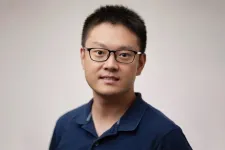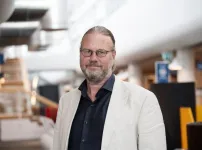Holograms that offer a three-dimensional (3D) view of objects provide a level of detail that is unattainable by regular two-dimensional (2D) images. Due to their ability to offer a realistic and immersive experience of 3D objects, holograms hold enormous potential for use in various fields, including medical imaging, manufacturing, and virtual reality. Holograms are traditionally constructed by recording the three-dimensional data of an object and the interactions of light with the object. However, this technique is computationally highly intensive as it requires the use of a special camera to capture the 3D images. This makes the generation of holograms challenging and limits their widespread use.
In recent times, many deep-learning methods have also been proposed for generating holograms. They can create holograms directly from the 3D data captured using RGB-D cameras that capture both color and depth information of an object. This approach circumvents many computational challenges associated with the conventional method and represents an easier approach for generating holograms.
Now, a team of researchers led by Professor Tomoyoshi Shimobaba of the Graduate School of Engineering, Chiba University, propose a novel approach based on deep learning that further streamlines hologram generation by producing 3D images directly from regular 2D color images captured using ordinary cameras. Yoshiyuki Ishii and Tomoyoshi Ito of the Graduate School of Engineering, Chiba University were also a part of this study, which was made available online on August 2, 2023, in Optics and Lasers in Engineering.
Explaining the rationale behind this study, Prof. Shimobaba says, “There are several problems in realizing holographic displays, including the acquisition of 3D data, the computational cost of holograms, and the transformation of hologram images to match the characteristics of a holographic display device. We undertook this study because we believe that deep learning has developed rapidly in recent years and has the potential to solve these problems.”
The proposed approach employs three deep neural networks (DNNs) to transform a regular 2D color image into data that can be used to display a 3D scene or object as a hologram. The first DNN makes use of a color image captured using a regular camera as the input and then predicts the associated depth map, providing information about the 3D structure of the image. Both the original RGB image and the depth map created by the first DNN are then utilized by the second DNN to generate a hologram. Finally, the third DNN refines the hologram generated by the second DNN, making it suitable for display on different devices.
The researchers found that the time taken by the proposed approach to process data and generate a hologram was superior to that of a state-of-the-art graphics processing unit. “Another noteworthy benefit of our approach is that the reproduced image of the final hologram can represent a natural 3D reproduced image. Moreover, since depth information is not used during hologram generation, this approach is inexpensive and does not require 3D imaging devices such as RGB-D cameras after training,” adds Prof. Shimobaba, while discussing the results further.
In the near future, this approach can find potential applications in heads-up and head-mounted displays for generating high-fidelity 3D displays. Likewise, it can revolutionize the generation of an in-vehicle holographic head-up display, which may be able to present the necessary information on people, roads, and signs to passengers in 3D. The proposed approach is thus expected to pave the way for augmenting the development of ubiquitous holographic technology.
Kudos to the research team for this remarkable achievement!
About Professor Tomoyoshi Shimobaba
Tomoyoshi Shimobaba is a Professor at Chiba University since 2019. He received his B.E. and M.E. degrees in Electrical Engineering from Gunma University, Japan, in 1997 and 1999, respectively, and Ph.D. from Chiba University, Japan, in 2002. He was an Associate Professor at the Graduate School of Engineering of Chiba University from 2009 to 2019. His research interests include three-dimensional displays using computer holography and its various applications. He has published more than 350 research papers, which have been cited over 5,000 times. He is a member of esteemed institutions such as IEEE, ITE, IEICE, Optica, OSJ, and SPIE.
END
Simplifying the generation of three-dimensional holographic displays
Researchers propose a novel approach that utilizes deep learning to generate three-dimensional holograms from colored two-dimensional images
2023-10-18
(Press-News.org)
ELSE PRESS RELEASES FROM THIS DATE:
Superlensing without a super lens: physicists boost microscopes beyond limits
2023-10-18
Ever since Antonie van Leeuwenhoek discovered the world of bacteria through a microscope in the late seventeenth century, humans have tried to look deeper into the world of the infinitesimally small.
There are, however, physical limits to how closely we can examine an object using traditional optical methods. This is known as the ‘diffraction limit’ and is determined by the fact that light manifests as a wave. It means a focused image can never be smaller than half the wavelength of light used to observe an object.
Attempts to break this limit with “super lenses” have all hit the hurdle of extreme visual losses, making the lenses opaque. ...
Collaborative study focuses on using computer algorithms to find molecular adaptations to improve COVID-19 drugs
2023-10-18
As the COVID-19 pandemic scattered and isolated people, researchers across Virginia Tech connected for a data-driven collaboration seeking improved drugs to fight the disease and potentially many other illnesses.
A multidisciplinary collaboration spanning several colleges at Virginia Tech resulted in a newly published study, “Data Driven Computational Design and Experimental Validation of Drugs for Accelerated Mitigation of Pandemic-like Scenarios,” in the Journal of Physical Chemistry Letters.
The study focuses on using computer algorithms to generate adaptations to ...
Study predicts potential for 110% electricity increases in U.S. urban buildings
2023-10-18
A research study led by University of Oklahoma assistant professor Chenghao Wang and recently published in the journal Nature Communications tackled the critical issue of how city-scale building energy consumption in urban environments will evolve under the influence of climate change.
Fossil fuels account for approximately 40% of all building energy use in urban city centers in the United States, and the U.S. Energy Information Administration reports that residential and commercial buildings in U.S. cities are one of the major energy ...
Open access: Need to move away from transformative agreements
2023-10-18
Sweden is far ahead when it comes to promoting open access to scholarly publications. But there is risk of getting stuck in a permanent transformation that favours large commercial publishers. A new report from the Association of Swedish Higher Education Institutions develops a strategy on how to work in negotiations with the publishers.
In 2021, the Association of Swedish Higher Education Institutions (Sveriges universitets- och högskoleförbund, SUHF) convened a “Beyond transformative agreements” working group (the BTA group) to lay the foundation for further advancing the transition to open access. Now, the group ...
Graz University of Technology study on e-scooter accidents: more helmets and less speed reduce the injury risk
2023-10-18
The use of e-scooters has increased significantly in recent years, but so has the number of accidents involving this relatively new form of transport. At the same time, knowledge about injury mechanisms in this area was still very limited. In the project SURF, funded by Zukunftsfonds Steiermark, the Vehicle Safety Institute at Graz University of Technology (TU Graz) investigated this topic using Human Body Models and derived recommendations to reduce the injury risk in e-scooter accidents.
Put on a helmet, decrease speed and get off the pavement
As ...
Reef-devouring predator survives coral bleaching and feasts on the survivors
2023-10-18
Research conducted by marine biologists from the University of Sydney has found juvenile crown-of-thorns starfish can withstand tremendous heatwaves well above levels that kill coral. These starfish then develop into carnivorous predators that devour reefs just as they begin to regrow.
Crown-of-thorns starfish are native to the Great Barrier Reef and found in the Indo-Pacific region, but they are classified as a species of concern because the damage large populations cause to coral is more significant than any other species. ...
Does SARS-CoV-2 infection have urological effects?
2023-10-18
Research published in the Journal of Internal Medicine indicates that SARS-CoV-2 infection may worsen lower urinary tract symptoms (LUTS) in men.
The study included 17,986 men receiving medication for LUTS within the public healthcare system of Hong Kong in 2021–2022, half of whom had SARS-CoV-2 infection. The group with SARS-CoV-2 had significantly higher rates of retention of urine (4.55% versus 0.86%); blood in the urine (1.36% versus 0.41%); clinical urinary tract infection (4.31% versus 1.49%); bacteria in the urine (9.02% versus 1.97%); and addition of 5-alpha reductase inhibitors, which are drugs prescribed for enlarged prostate. (0.50% versus 0.02%). These urological ...
How did the initial COVID-19 wave affect mental health in the UK?
2023-10-18
New research published in Economic Inquiry reports substantial increases in psychological distress in the UK during the first wave of the COVID-19 pandemic.
Mental health effects were more pronounced for females; younger individuals; Black, Asian, and minority ethnic communities; and migrants. Also, people who had financial worries, loneliness, or were living in overcrowded dwellings experienced significantly worse mental health deterioration during the first wave.
The study used data from the UKHLS, also known as Understanding Society, which is a household panel dataset that captures, among other things, information from adults about their economic and social circumstances, ...
Heat-tolerant predatory sea stars will likely be a threat to coral during climate change
2023-10-18
Population outbreaks of the crown-of-thorns sea star (COTS), a predator of coral, can cause widespread coral mortality. COTS are herbivorous as juveniles but then switch to coral consumption as they grow to adulthood. When researchers exposed juvenile COTS to heat stress scenarios at time and temperature durations designed to reflect conditions that cause coral bleaching and mortality, juveniles exhibited tolerance to heatwave conditions well above levels that kill coral.
The findings, which are published in Global Change Biology, indicate that juvenile COTS are likely to persist as major coral predators in reefs already vulnerable to the effects of climate change.
“This ...
Does COVID-19 affect Alzheimer’s disease risk?
2023-10-18
The various neurological symptoms that patients with COVID-19 have experienced suggest that viral infections may increase the risk of neurodegeneration, which could in turn contribute to the development of conditions such as Alzheimer’s disease (AD). A review in the Journal of Neurochemistry highlights the potential mechanistic links between COVID-19 and AD.
The authors note that age is the largest contributing factor to AD and COVID-19, and both appear to enhance the effects of the other, with potentially synergistic effects on neurodegeneration.
“I believe over the next several ...
LAST 30 PRESS RELEASES:
Superradiant spins show teamwork at the quantum scale
Cleveland Clinic Research links tumor bacteria to immunotherapy resistance in head and neck cancer
First Editorial of 2026: Resisting AI slop
Joint ground- and space-based observations reveal Saturn-mass rogue planet
Inheritable genetic variant offers protection against blood cancer risk and progression
Pigs settled Pacific islands alongside early human voyagers
A Coral reef’s daily pulse reshapes microbes in surrounding waters
EAST Tokamak experiments exceed plasma density limit, offering new approach to fusion ignition
Groundbreaking discovery reveals Africa’s oldest cremation pyre and complex ritual practices
First breathing ‘lung-on-chip’ developed using genetically identical cells
How people moved pigs across the Pacific
Interaction of climate change and human activity and its impact on plant diversity in Qinghai-Tibet plateau
From addressing uncertainty to national strategy: an interpretation of Professor Lim Siong Guan’s views
Clinical trials on AI language model use in digestive healthcare
Scientists improve robotic visual–inertial trajectory localization accuracy using cross-modal interaction and selection techniques
Correlation between cancer cachexia and immune-related adverse events in HCC
Human adipose tissue: a new source for functional organoids
Metro lines double as freight highways during off-peak hours, Beijing study shows
Biomedical functions and applications of nanomaterials in tumor diagnosis and treatment: perspectives from ophthalmic oncology
3D imaging unveils how passivation improves perovskite solar cell performance
Enriching framework Al sites in 8-membered rings of Cu-SSZ-39 zeolite to enhance low-temperature ammonia selective catalytic reduction performance
AI-powered RNA drug development: a new frontier in therapeutics
Decoupling the HOR enhancement on PtRu: Dynamically matching interfacial water to reaction coordinates
Sulfur isn’t poisonous when it synergistically acts with phosphine in olefins hydroformylation
URI researchers uncover molecular mechanisms behind speciation in corals
Chitin based carbon aerogel offers a cleaner way to store thermal energy
Tracing hidden sources of nitrate pollution in rapidly changing rural urban landscapes
Viruses on plastic pollution may quietly accelerate the spread of antibiotic resistance
Three UH Rainbow Babies & Children’s faculty elected to prestigious American Pediatric Society
Tunnel resilience models unveiled to aid post-earthquake recovery
[Press-News.org] Simplifying the generation of three-dimensional holographic displaysResearchers propose a novel approach that utilizes deep learning to generate three-dimensional holograms from colored two-dimensional images








